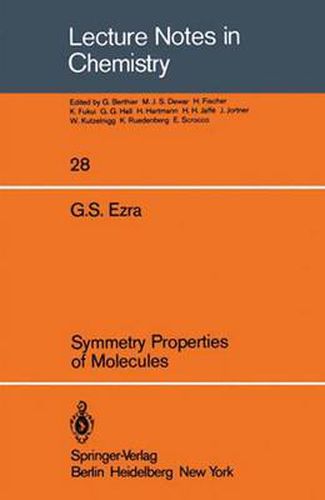Readings Newsletter
Become a Readings Member to make your shopping experience even easier.
Sign in or sign up for free!
You’re not far away from qualifying for FREE standard shipping within Australia
You’ve qualified for FREE standard shipping within Australia
The cart is loading…






This title is printed to order. This book may have been self-published. If so, we cannot guarantee the quality of the content. In the main most books will have gone through the editing process however some may not. We therefore suggest that you be aware of this before ordering this book. If in doubt check either the author or publisher’s details as we are unable to accept any returns unless they are faulty. Please contact us if you have any questions.
The aIm of the present article is to give a critical exposition of the theory of the symmetry properties of rigid and nonrigid molecules. Despite the fact that several accounts of the subject, both technical and didactic, are now available, and despite the extensive discussion of nonrigid molecule symmetry that has been going on since the classic papers of Hougen and Longuet-Higgins, there remains a need for a unifying survey of the problem. Previous treatments have tended to emphasize one or the other particular viewpoint at the expense of a broader view. Renewed interest in the details of the symmetry classification of rotation vibration states of highly symmetric (octahedral) molecules has led to a reexam ination of the relation between conventional point group operations and permutations of identical nuclei in rigid molecules, together with a clarification of the fundamental role of the Eckart constraints and associated Eckart frame. As is shown below, analogous insights can also be obtained in the case of nonrigid molecule symmetry, where the Eckart-Sayvetz conditions provide a natural generalization of the Eckart constraints. The importance of particular definitions of the ‘molecule-fixed’ frame in the theory of molecular symmetry can be better appreciated by examining their dynamical origin. Chapter 1 is therefore devoted to a description of the derivation of the usual Wilson-Howard-Watson form of the molecular Hamiltonian, together with its generalization to nonrigid molecules. Particular attention is given to the intro duction of molecular models and use of the Eckart and Eckart-Sayvetz constraints.
$9.00 standard shipping within Australia
FREE standard shipping within Australia for orders over $100.00
Express & International shipping calculated at checkout
This title is printed to order. This book may have been self-published. If so, we cannot guarantee the quality of the content. In the main most books will have gone through the editing process however some may not. We therefore suggest that you be aware of this before ordering this book. If in doubt check either the author or publisher’s details as we are unable to accept any returns unless they are faulty. Please contact us if you have any questions.
The aIm of the present article is to give a critical exposition of the theory of the symmetry properties of rigid and nonrigid molecules. Despite the fact that several accounts of the subject, both technical and didactic, are now available, and despite the extensive discussion of nonrigid molecule symmetry that has been going on since the classic papers of Hougen and Longuet-Higgins, there remains a need for a unifying survey of the problem. Previous treatments have tended to emphasize one or the other particular viewpoint at the expense of a broader view. Renewed interest in the details of the symmetry classification of rotation vibration states of highly symmetric (octahedral) molecules has led to a reexam ination of the relation between conventional point group operations and permutations of identical nuclei in rigid molecules, together with a clarification of the fundamental role of the Eckart constraints and associated Eckart frame. As is shown below, analogous insights can also be obtained in the case of nonrigid molecule symmetry, where the Eckart-Sayvetz conditions provide a natural generalization of the Eckart constraints. The importance of particular definitions of the ‘molecule-fixed’ frame in the theory of molecular symmetry can be better appreciated by examining their dynamical origin. Chapter 1 is therefore devoted to a description of the derivation of the usual Wilson-Howard-Watson form of the molecular Hamiltonian, together with its generalization to nonrigid molecules. Particular attention is given to the intro duction of molecular models and use of the Eckart and Eckart-Sayvetz constraints.